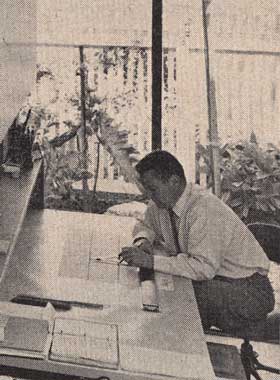Much of the work of A. Quincy Jones, FAIA, from the 1960s was in the design of buildings for university campuses and of office buildings. But he first gained recognition in residential work in the postwar era when the need for housing was acute.
While in private practice in Los Angeles from 1937, his houses set standards of excellence that affected all house design of the postwar period, especially the tract house, to which he was one of the few to give architectural consideration. A characteristic of these small houses was the simplified structural system which allowed for spatial diversity, in contrast to the usual static box.
His first major foray into residential housing was as part of the team that developed the Mutual Housing Association in Crestwood Hills (Brentwood) near Los Angeles. He worked with Eichler from 1952 through the 1960's designing dozens of different models that can be found throughout the Bay Area and in Southern California.
Jones was a professor of architecture at the University of Southern California from 1951-67. He was born in Kansas City, Missouri, in 1913, and died in Los Angeles in 1979. His widow, Elaine Sewell Jones, lives in Los Angeles.
An excellent publication showcasing Jones's work is by Bunji Murotani, titled A. Quincy Jones: The Oneness of Architecture (Process Architecture Number 41. Process Architecture Publishing Co. Tokyo. 1983). It is readily available through used book stores on the web. See also this article from the February 1957 issue of Living for Young Homemakers. A new book, A. Quincy Jones, by Cory Bruckner, is the first ever biography of Jones. Published in May, 2002, by Phaidon Press.
More information about A. Quincy Jones can be found on the Eichler Network


